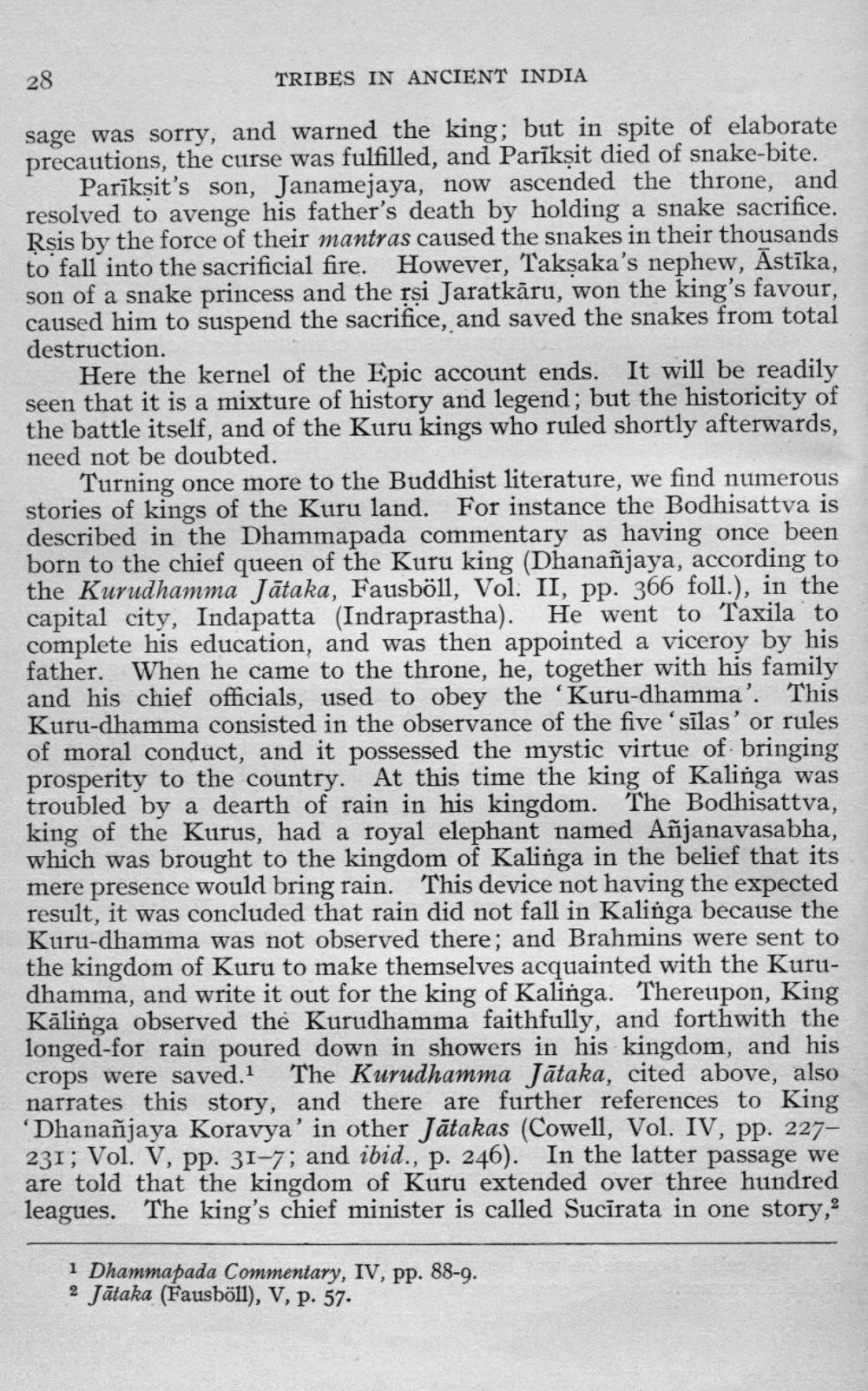________________
28
TRIBES IN ANCIENT INDIA
sage was sorry, and warned the king; but in spite of elaborate precautions, the curse was fulfilled, and Parīksit died of snake-bite.
Parīksit's son, Janamejaya, now ascended the throne, and resolved to avenge his father's death by holding a snake sacrifice. Rsis by the force of their mantras caused the snakes in their thousands to fall into the sacrificial fire. However, Taksaka's nephew, Astīka, son of a snake princess and the rşi Jaratkāru, won the king's favour, caused him to suspend the sacrifice, and saved the snakes from total destruction.
Here the kernel of the Epic account ends. It will be readily seen that it is a mixture of history and legend; but the historicity of the battle itself, and of the Kuru kings who ruled shortly afterwards, need not be doubted.
Turning once more to the Buddhist literature, we find numerous stories of kings of the Kuru land. For instance the Bodhisattva is described in the Dhammapada commentary as having once been born to the chief queen of the Kuru king (Dhanañjaya, according to the Kurudhamma Jātaka, Fausböll, Vol. II, pp. 366 foll.), in the capital city, Indapatta (Indraprastha). He went to Taxila to complete his education, and was then appointed a viceroy by his father. When he came to the throne, he, together with his family and his chief officials, used to obey the 'Kuru-dhamma'. This Kuru-dhamma consisted in the observance of the five ‘sīlas' or rules of moral conduct, and it possessed the mystic virtue of bringing prosperity to the country. At this time the king of Kalinga was troubled by a dearth of rain in his kingdom. The Bodhisattva, king of the Kurus, had a royal elephant named Añjanavasabha, which was brought to the kingdom of Kalinga in the belief that its mere presence would bring rain. This device not having the expected result, it was concluded that rain did not fall in Kalinga because the Kuru-dhamma was not observed there; and Brahmins were sent to the kingdom of Kuru to make themselves acquainted with the Kurudhamma, and write it out for the king of Kalinga. Thereupon, King Kalinga observed the Kurudhamma faithfully, and forthwith the longed-for rain poured down in showers in his kingdom, and his crops were saved.1 The Kurudhamma Jātaka, cited above, also narrates this story, and there are further references to King
Dhanañjaya Koravya' in other Jātakas (Cowell, Vol. IV, pp. 227231; Vol. V, pp. 31-7; and ibid., p. 246). In the latter passage we are told that the kingdom of Kuru extended over three hundred leagues. The king's chief minister is called Sucīrata in one story,
i Dhammapada Commentary, IV, pp. 88-9. 2 Jataka (Fausböll), V, p. 57.




